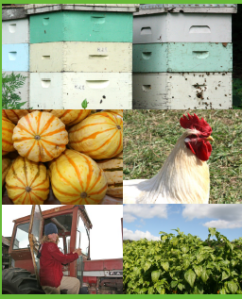Yesterday I just put the finishing touches on the latest Living on a Few Acres brochure. I am excited about this program because Living on a Couple acres is what I try to do. I have a modest organic vegetable garden in the sunniest spot of my woodland property. Here I can raise greens, beans, cukes, garlic and hot peppers with no problem. I don’t have enough sun for bell peppers or tomatoes…so I get extra produce from overwhelmed friends or indulge in my farmers-market addiction and purchase tomatoes there. I also maintain a small flock of egg laying hens, though right now in the cold depths of winter, they aren’t producing much. I experiment with figs, pawpaws, beach plums, American plums, strawberries, raspberries, blueberries. It is challenging fending off the woodland dwellers who find my crops delightful, not to mention the chickens who much prefer a shiny ripe strawberry (and the compost!) to their daily crumbles. Eventually I will add bees to my small bit of land.
Designed for people wanting to grow more of their own food, and add bees to their own land, the Living on a Few Acres program walks participants through the basics of soils, growing vegetables and fruit, raising animals for eggs, meat and milk and beekeeping over the course of 6 evenings. An optional field trip on April 4th will find participants at a farm where chickens, berries, vegetables, herbs and cut flowers are raised and helping with a hands-on project.


